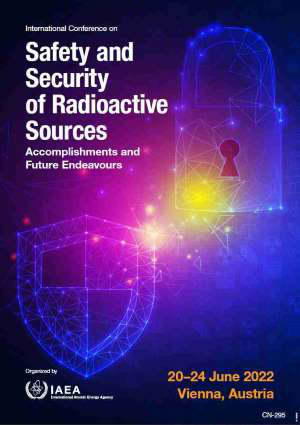Speaker
Description
A study to estimate the Annual Effective Dose Equivalent (AEDE) and Excess Lifetime Cancer Risk (ELCR) due to the existence of the artificial cobalt-60 radioactive source producing ionizing radiation levels within the radiotherapy facility in Komfo Anokye Teaching Hospital (KATH), Ghana. The study was conducted using a portable OD-01 Ionization Chamber Survey Meter. Varying measurement of absorbed dose rate (ADR) in the air between 5 m and 40 m was carried out within the cobalt 60 bunker around the radioactive source and fifteen locations within the radiotherapy facility. The estimated Absorbed Dose Rate in the air within the cobalt-60 bunker from 5 m to 40 m around the Cobalt-60 source was 0.299 ± 0.001 to 0.977 ± 0.005 μSv/h with an average of 0.498 ± 0.005 μSv/h. The estimated annual effective dose equivalent within the Co-60 bunker ranged 1.100 mSv/yr to 3.595 mSv/yr around the cobalt-60 source. Radiation dose levels of 0.268 ± 0.008 μSv/h to 0.678 ± 0.005 μSv/h with an average of 0.440 ± 0.004 μSv/h was measured around the selected fifteen locations. Comparably, values of 3.85 10-3 to 12.58 10-3 and 3.45 × 10-3 to 8.73 × 10-3 for Excess Lifetime Cancer Risks were estimated within the cobalt and the fifteen locations within the facility respectively. The absorbed dose values at 5 m, 10 m, and 15 m within the Co-60 bunker and the location Co-60 bunker as part of the locations in the facility exceeded the permissible limit of 0.57 as recommended by ICRP. The AEDE and ELCR values were within the permissible limits as recommended by ICRP. The implication of the AEDE and ELCR data obtained is that the Cobalt-60 unit and its surrounding is radiation safe but the probability of staff within occupational exposure developing cancer from the Absorbed dose and background ionizing radiation is high over a lifetime. It is nonetheless suggested that absorbed dose level monitoring and assessment of the Radiation Therapy Technologist (RTT) and other staff around the unit be checked from time to time. It is also suggested the Occupational Staff such as RTTs spend minimal time in the bunker.
This research verified the safety of the cobalt-60 radioactive sources and the concept of the determination of the Annual Effective Dose Equivalent (AEDE) and Excess Lifetime Cancer Risk (ELCR) contributing to checking the occupational and public exposures within the facility.
| Country OR Intl. Organization | Ghana, KNUST/KATH |
|---|

